The Great Indoors
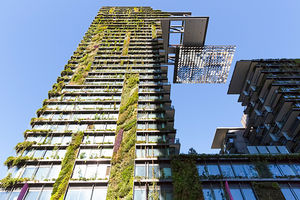
Biophilia describes the human inclination to seek connections to nature. It is believed that biophilic design can reduce stress, enhance clarity, improve our well-being and increase healing as the world population continues to grow and impact our resources. Today, architects and interior designers who specialize in Biophilic design incorporate environmental materials, natural light, plants, and other eco-friendly experiences of the natural world into a modern interior environment. While the “green” movement became popular by evoking an idea of nature and the environment, it has been watered down largely due to “greenwashing,” a practice of making misleading claims about environmental benefits. The next shift in environmentally-friendly building we saw was sustainability, offering the idea of a closed-loop eco-system. This trend has also become fatigued as it had no real standards for measurement.
Six Principles of Biophilic Design
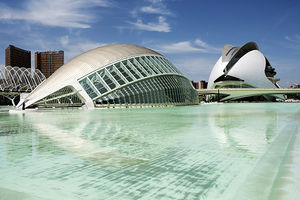 Humans need nature in a fundamental way, however we have often designed our dwellings and cities in ways that both degrade the environment and alienate us from nature. The new trend of biophilic design can help reconnect us to the natural world and in turn drive sustainable development. Architects are seeing a shift in the building industry from a focus on the building itself towards the well-building standard, which is focused on the building’s occupants. This innovative development is centered around a person’s experience and comfort level focusing on the six key principals of biophilic design that architects should consider when building.
Humans need nature in a fundamental way, however we have often designed our dwellings and cities in ways that both degrade the environment and alienate us from nature. The new trend of biophilic design can help reconnect us to the natural world and in turn drive sustainable development. Architects are seeing a shift in the building industry from a focus on the building itself towards the well-building standard, which is focused on the building’s occupants. This innovative development is centered around a person’s experience and comfort level focusing on the six key principals of biophilic design that architects should consider when building.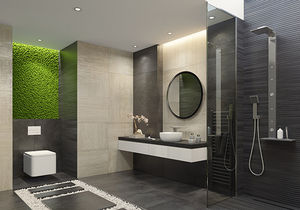 Environmental Features
Environmental Features
Well-recognized environmental characteristics such as color, water, air, light, and natural materials.
Natural Shapes and Forms
Natural shapes that resist straight lines and right angles such as botanical, animal or shell motifs, or arches, vaults or domes.
Natural Patterns and Processes
Varying the sensory experience of a space with time, utilizing change, transitions, complimentary contrasts, balance and tension, rhythm, or use of scale.
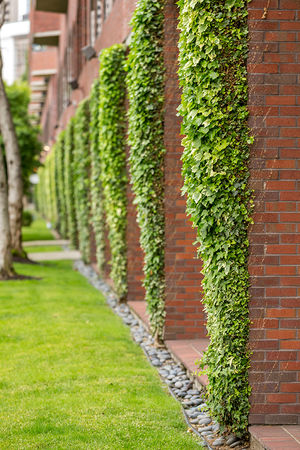 Light and Space
Light and Space
Using bright, dark, warm, cool, shaped, filtered, diffused, inside or outside light to evoke a natural human reaction.
Place-Based Relationships
The significance of the location of a place is tied to the historic, cultural, geographic, spiritual, or ecological identity or meaning.
Evolved Human-Nature Relationships
Humanity’s complex relationships with nature that we still react strongly to, such as exploration and discovery, order and complexity, security and protection, or fear and awe, evokes emotion towards our of our long history of evolution.
Feeling Nature in the Air
While it logically seems best to keep indoor conditions constant, studies show that people’s performance in a work or school setting is enhanced in spaces with variability in temperature and clean airflow. Clean indoor airflow stimulation has been found to keep people awake, also naturally improving focus and performance. HVAC systems play a central role in supporting the comfort and safety of indoor air environments. Insulation materials used in these systems can either help defend against or contribute to indoor air-quality problems. This is particularly true inside air-handling systems where the insulation needs to resist moisture while ensuring that the air passing over it remains mold-, dust- and fiber-free. Using the wrong type of insulation can cause particulate fibers to circulate or it could off-gas volatile organic compounds (VOCs) into the indoor air, creating poor indoor breathing conditions. 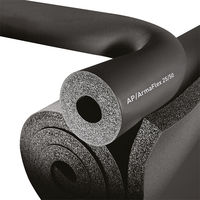 Armacell’s closed-cell elastomeric foam insulation products are fiber-free, non-particulating, have low VOCs and have the added advantage of antimicrobial protection. Most of Armacell’s insulation products are GREENGUARD Gold Certified, the third-party standard designed to define low-emitting materials suitable for environments where people spend extensive amounts of time. Maintaining a fiber-free, particle-free air stream is especially important for a clean-air strategy in a biophilic design and HVAC systems should be considered when analyzing environmental features.
Armacell’s closed-cell elastomeric foam insulation products are fiber-free, non-particulating, have low VOCs and have the added advantage of antimicrobial protection. Most of Armacell’s insulation products are GREENGUARD Gold Certified, the third-party standard designed to define low-emitting materials suitable for environments where people spend extensive amounts of time. Maintaining a fiber-free, particle-free air stream is especially important for a clean-air strategy in a biophilic design and HVAC systems should be considered when analyzing environmental features.
For more information about biophilic design visit:
https://www.willmoreiles.com/news-resources/cpd-biophilic-design-2
https://www.venveo.com/podcast/how-to-sell-green-building-materials
https://www.mahlaofficefurniture.com/single-post/2018/04/13/Biophilic-Design
